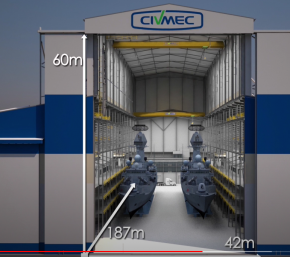The retention of the Supply ship HMAS Sirius and the two FFGs Melbourne and Newcastle may of assisted with our options through to the early 2030's.As I understand it AusGov would have provided initial guidance on the acceptable scope of the project, which would have been some time prior to the 2013 DWP publication. The scope of the project, based off statements which have been made as well as what the OPV's are replacing, was for the RAN to acquire larger, ocean-going vessels to carry out the constab/patrol duties of the ACPB. From a cost perspective, it was replacing patrol boats costing ~AUD$30 mil. each, with larger and more capable patrol vessels costing ~AUD$300 mil. each.
If one were to contemplate corvettes, the price per vessel would have been more like AUD$600 mil. each.
One also needs to really look at and consider the timeline of SEA 1180. For instance, the competitive eval to select a designer and builder started in Nov 2015 as SEA 1180 Phase 1 Offshore Patrol Vessel program, per the ANAO report here. In order for a designer and builder of the future OPV's to be selected, the decision to order OPV's rather than corvettes, frigates, or something else would already have been made.
Now I suppose that prior to Lurssen getting selected in 2017 to provide the OPV design, a review could have been conducted which determined that ordering OPV's was inappropriate, but then either SEA 1180 would have to have been closed and a new project commenced, or all the preliminary work which lead up to SEA 1180 Phase 1 would have needed to be redone. This would then lead to a new set of ship requirements which the different designers could then work towards, before designers/builders get short-listed and finally a prime selected. Basically changing the 'rules' of the project would require everything to be restarted and redone.
I expect it would be similar to if there was an AIR project running to select a replacement LIFT, and then various people started advocating for the LIFT design to be changed to also be a combat aircraft able to sortie into/through hostile airspace, with other people even suggesting shortening the LIFT order to purchase more fighter aircraft.
My personal belief is that yes, the RAN will likely need more combatants between now and 2035 (quite possibly earlier) than are currently planned. Unfortunately though in order for more/new combatants to be in service for much of the peak demands (late 2020's into early 2030's IMO) the projects which would have ordered the new combatants should have started a decade ago or more. Looking through the 2013 DWP, specifically the strategic outlook, the DWP does indicate trends of rising tension but does not suggest large-scale conflict in the Asia-Pacific region being likely between 2025-2030, which is one of the concerns many have now. Basically it seems that the 2013 DWP expected conditions to be more benign than it seems is now expected. From a warship in service/availability POV that is a problem because of just how long it takes to get warships into service. Looking at the ANAO reporting on SEA 4000, first pass approval was in May 2005 or thereabouts, with IOC of the Hobart-class DDG reached in at the end of 2018 or start of 2019. Now the Hobart-class DDG did have some gov't ordered delays which added a couple of years IIRC, that still puts naval acquisitions taking 10+ years between project start/first pass approval and initial entry into service.
If the in service deadline to be useful is 2030, then projects would have needed to start ~2018/2019, and gov't would need to have approved the additional projects and also been willing to sustain them.
Value for money and were in service.
Cheers S

